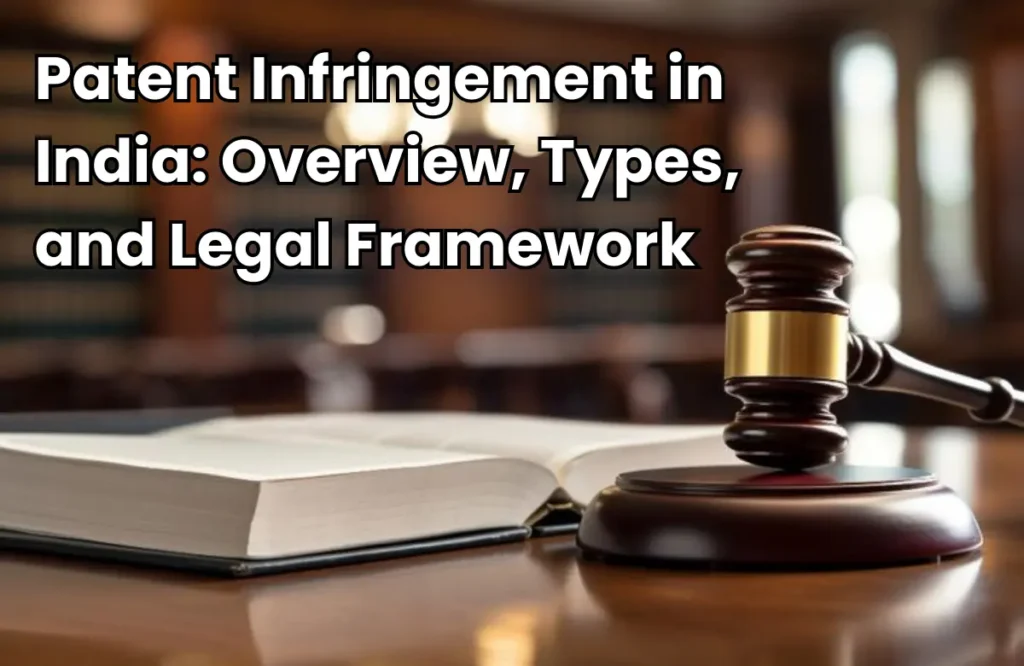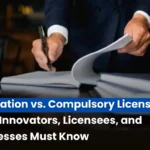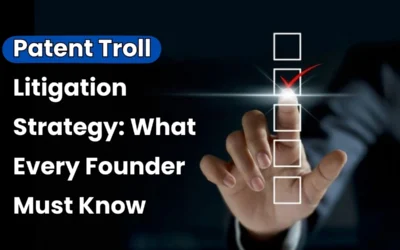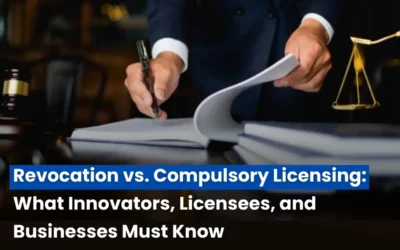
Patent infringement is a critical concern for anyone engaged in business, as it carries significant legal and commercial implications. The seriousness of this issue arises from two key factors: first, it constitutes an unlawful act, and second, it is punishable under law, with the severity of penalties depending on the extent of the violation. Therefore, individuals or organizations involved in patents or related industries must have a clear understanding of what patent infringement entails, the various forms it can take, and the legal framework governing it in India.
What Does Patent Infringement Mean?
Patent infringement in India occurs when someone makes use of a patented invention without the consent of the patent owner. Under the relevant act, such an act is considered unlawful. Patent infringement is a punishable offense in India, which has legal consequences according to the relevant provisions of the law.
If we look into the Indian Patents Act, 1970, we find that it does not provide a specific definition of patent infringement. However, the Act lays down certain provisions that identify acts amounting to unauthorized or unlawful use of a patented invention, which are treated as patent infringement.
To gain a clearer perspective, let’s explore a few prominent recent examples of patent infringement cases in India.
GSP Crop Science vs. BR Agrotech (2025)
Delhi High Court granted a permanent injunction against BR Agrotech for infringing GSP’s pesticide patent (IN’568). The court also awarded damages in GSP’s favor.
Bristol-Myers Squibb vs. Zydus Lifesciences (2025)
The court stopped Zydus from launching its biosimilar of Nivolumab, citing infringement of BMS’s patent. Zydus has appealed against this injunction.
Novo Nordisk vs. Dr. Reddy’s (2025)
In the case of Novo Nordisk vs. Dr. Reddy’s, Novo Nordisk secured an interim order restraining Dr. Reddy’s from selling a semaglutide product (Wegovy). The case is ongoing before the Delhi High Court.
What Are the Types of Patent Infringement?
According to the relevant Act, there are primarily seven types of patent infringement that a person may commit.
Direct Infringement
In IPR law, this occurs when any entity other that patent holder use patented invention, without order.
Indirect Infringement (Contributory / Inducement)
Indirect infringement, which includes contributory infringement and inducement, takes place when a person or entity assists, enables, or encourages another to violate a patent or other intellectual property right, instead of committing the infringement themselves.
Literal Infringement
Literal infringement happens when the product or process is an exact copy of what is written in the patent claims, with no differences from the patented invention.
Non-Literal Infringement (Doctrine of Equivalents)
Non-literal infringement, often referred to as the Doctrine of Equivalents, arises when a patent holder can establish infringement even though the contested product or process does not identically align with the precise wording of the patent claims.
And other types of patent infringement are:
- Willful Infringement
- Process Patent Infringement
- Colorable Imitation (Disguised Infringement)
The division of patent infringement into different types is based on several factors:
- Direct use or indirect use
- The way product or process has used (exact or equivalent),
- The mindset of the infringer (deliberate or inadvertent),
- Covering a product or a process
These distinctions help courts and the law determine the scope of protection granted to a patent and the appropriate remedies in each situation.
Legal Framework of Patent Infringement in India: Latest Legal Framework and Remedies
Law in India, allows patent holders to control how their invention is used, and any unauthorized use or advantage taken from the patent is treated as infringement. Recent changes, like the Jan Vishwas Act, 2023 and Draft Patent Rules, 2025, have made the system easier by replacing some criminal punishments with fines and moving many processes online. Courts still handle most cases, usually by stopping the infringement through orders and awarding compensation to the patent holder.
The reliefs include court orders to prevent further violation, monetary compensation or recovery of profits for the patentee, and the seizure or disposal of infringing products. Recent changes have eased strict criminal sanctions, substituting them with monetary penalties, thereby shifting the emphasis toward civil remedies.
Read Also: Patent Monetization vs Tokenization vs Commercialization: What’s the Difference
Conclusion
Patent infringement isn’t just about rules and penalties — it’s about respecting creativity, protecting hard work, and encouraging new ideas. By valuing originality and safeguarding innovation, we build a fair environment where businesses and inventors can grow with confidence.









